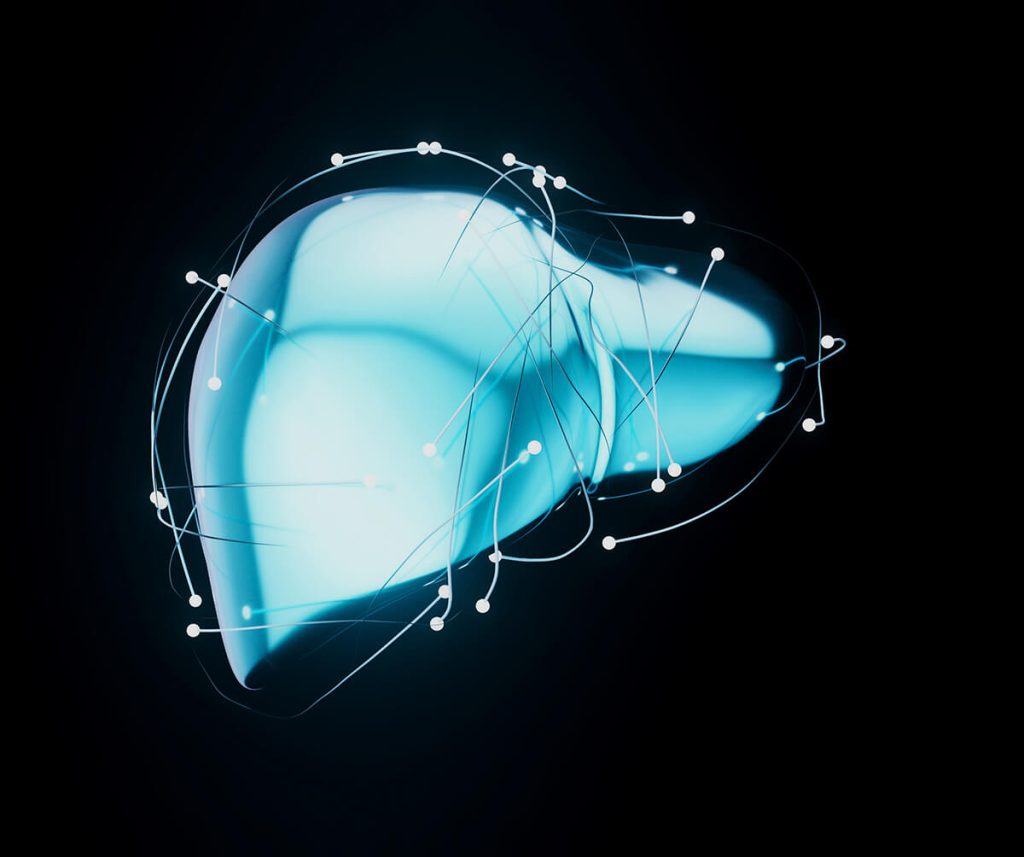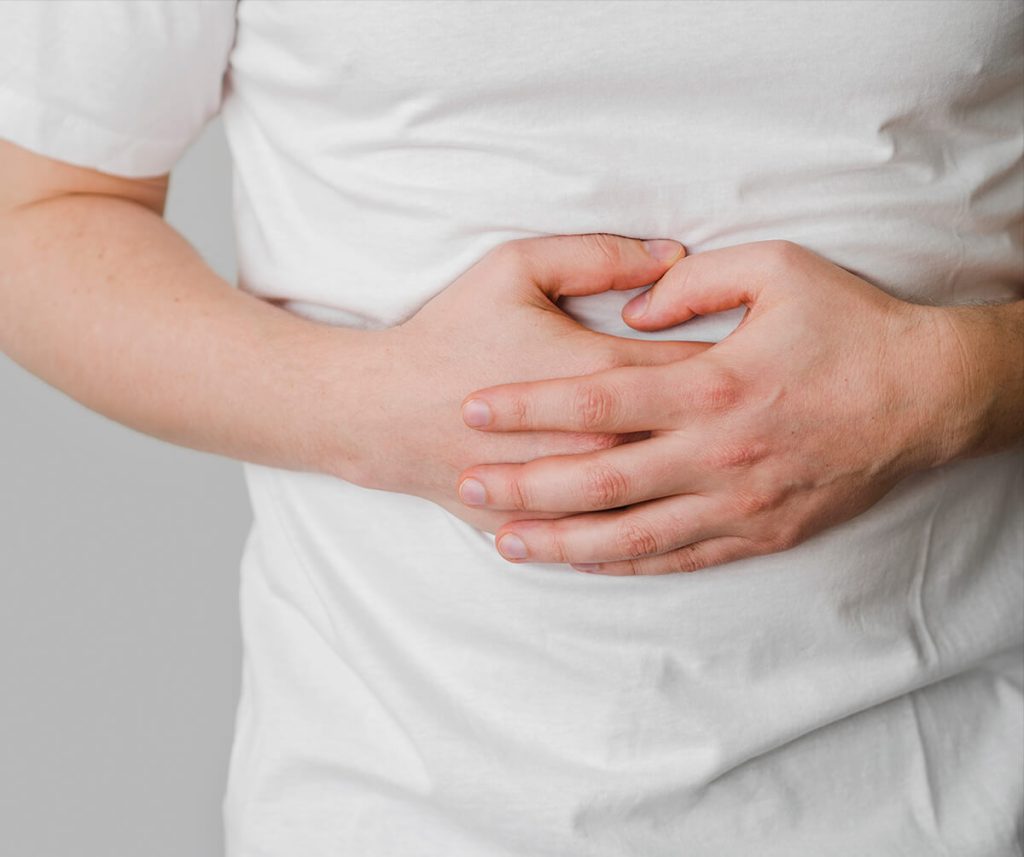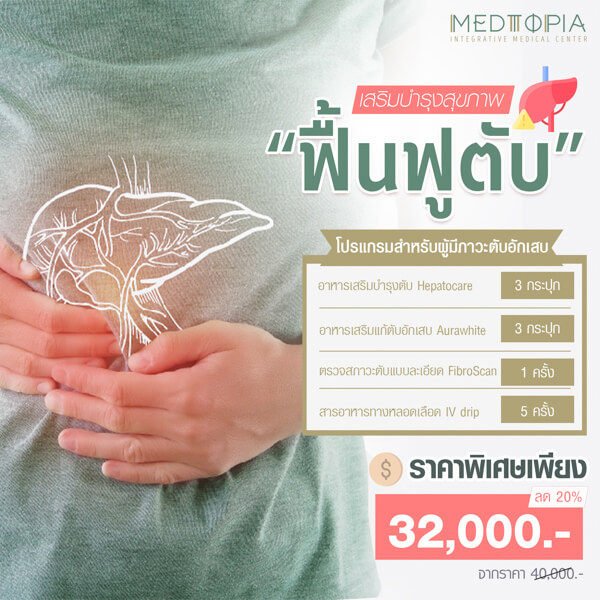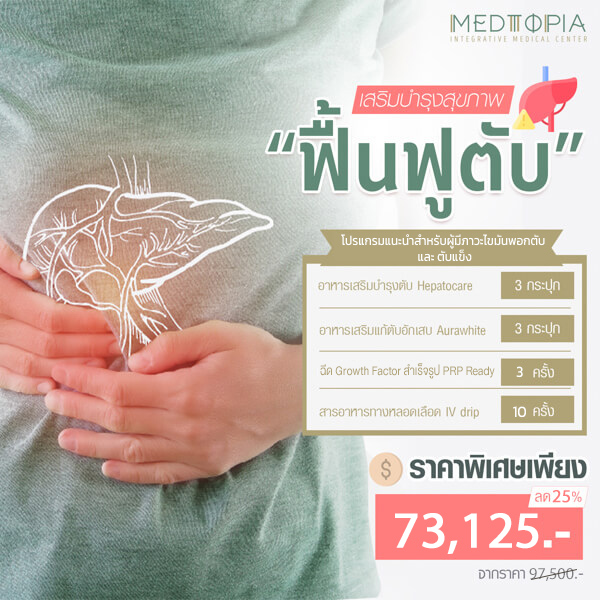Liver
Did you know that the liver has an exceptionally high ability to regenerate itself? The liver can produce new liver cells to replace the old, dead ones. Even if over 70% of liver tissue has been damaged, it can still repair itself back to normal within just a few weeks. However, during this self-repair process, the liver requires an adequate supply of nutrients and a large amount of antioxidants to protect the repairing process from any disturbances and to help the new liver cells survive strongly.
You may notice that in Thailand, there is a campaign encouraging people to abstain from alcohol during the Buddhist Lent (known as “Lao Khao Khao Pansa”). This is because stopping alcohol consumption for just 3 months gives the liver time to recover from damage accumulated over the previous 9 months or more. But why do many people still have liver problems related to alcohol even after abstaining for this period? This is because during the alcohol-free period, the liver did not receive enough nutrients and antioxidants, so it could not fully repair itself, even after 3 months of abstinence.

The First Important Step in Liver Repair is Liver Detoxification
If the remaining liver tissue is not strong enough, it cannot compensate for the lost parts. Liver detoxification cleans and strengthens the living liver cells, freeing them from toxins that gradually erode from within. Liver detoxification occurs in three phases:
Phase 1
Most toxins accumulated in the body are fat-soluble and cannot dissolve in water, so they tend to build up in fat tissue around organs and are not easily excreted through urine. In phase 1, the liver forces these toxins to become water-soluble by binding them to certain substances such as Vitamin B, Glutathione, Phytonutrients (plant chemicals), and Branched-Chain Amino Acids (BCAA). However, making toxins water-soluble does not neutralize them; sometimes their toxicity may even increase! Therefore, the toxins must be sent to phase 2.
Phase 2
This phase neutralizes the toxins so they become safe enough to be transported in the bloodstream. This is done by binding the phase 1 toxins with special molecules such as Glutathione, Sulfur compounds, Methyl groups, and amino acids. After phase 2, the toxins are completely neutralized and can be sent to other organs for elimination.
Phase 3
The final step is eliminating the toxins from the liver by sending them to excretory organs like the gallbladder, skin, and kidneys. The toxins are expelled through bile, sweat, and urine. However, toxins expelled via the gallbladder enter the intestines again with the bile, creating a chance for toxins to be reabsorbed into the body. To prevent this, dietary fiber and beneficial gut microbes are essential. Fiber binds the toxins in the intestines, and good gut bacteria help break down these toxins before they can be reabsorbed.

If liver cirrhosis has developed, it means that a portion of the liver tissue has died and turned into scar tissue (fibrosis). At this stage, repair and regeneration become much more difficult. Treatment then shifts focus to stimulating stem cell activity, encouraging stem cells to repair the liver by generating new liver cells to replace the fibrotic areas.
One medication that can help stimulate stem cells is Liraglutide. Therefore, even if patients are reluctant to use injectable medications, doctors may recommend considering this treatment for the best possible outcome.
Besides Liraglutide, there are also other cellular repair stimulators known as growth factors, which promote the growth of various cells, including stem cells and liver cells. These growth factors enhance cell division, tissue regeneration, and repair processes, making recovery faster and more effective.
Effective growth factors for treating liver fibrosis include placenta extract and PRP (Platelet-Rich Plasma).
Blood consists of four main components: plasma, red blood cells, white blood cells, and platelets. Inside the platelets are substances that stimulate cell repair. Using platelets in treatment means injecting these cell repair stimulators to help the liver cells regenerate more effectively.
However, when using concentrated platelets derived from a patient’s own blood, the amount of growth factors can sometimes be difficult to control. In some individuals, their platelets may contain diluted growth factors, so injecting their own platelets may show limited results.
Currently, growth factors are also extracted from platelets and processed into standardized, ready-to-use products. These contain a higher and controlled concentration of growth factors, allowing for precise control over the type and amount delivered.
Injection with standardized growth factors is therefore more effective and shows clearer results compared to using the patient’s own blood platelets.
|
Recommended Program for People with Hepatitis |
|
|---|---|
| Item | Price |
| Liver supplement Hepatocare (3 bottles) | 4,500 THB |
| Anti-hepatitis supplement Aurawhite (3 bottles) | 3,000 THB |
| Detailed liver condition test FibroScan (1 time) | 2,500 THB |
| Nutrient intravenous therapy (IV drip) (5 sessions) | 30,000 THB |
| Full price | 40,000 THB |
| Special package price | 32,000 THB (20% off) |
|
Recommended Program for Fatty Liver and Cirrhosis |
|
|---|---|
| Item | Price |
| Liver supplement Hepatocare (3 bottles) | 4,500 THB |
| Anti-hepatitis supplement Aurawhite (3 bottles) | 3,000 THB |
| Injection of Ready-made Growth Factor PRP (3 sessions) | 15,000 THB |
| Nutrient intravenous therapy (IV drip) (10 sessions) | 60,000 THB |
| Placenta extract injections (3 sessions) | 15,000 THB |
| Full price | 97,500 THB |
| Special package price | 73,125 THB ( 25% off) |
FibroScan test x 2 times (worth 5,000 THB)

 ไทย
ไทย

















